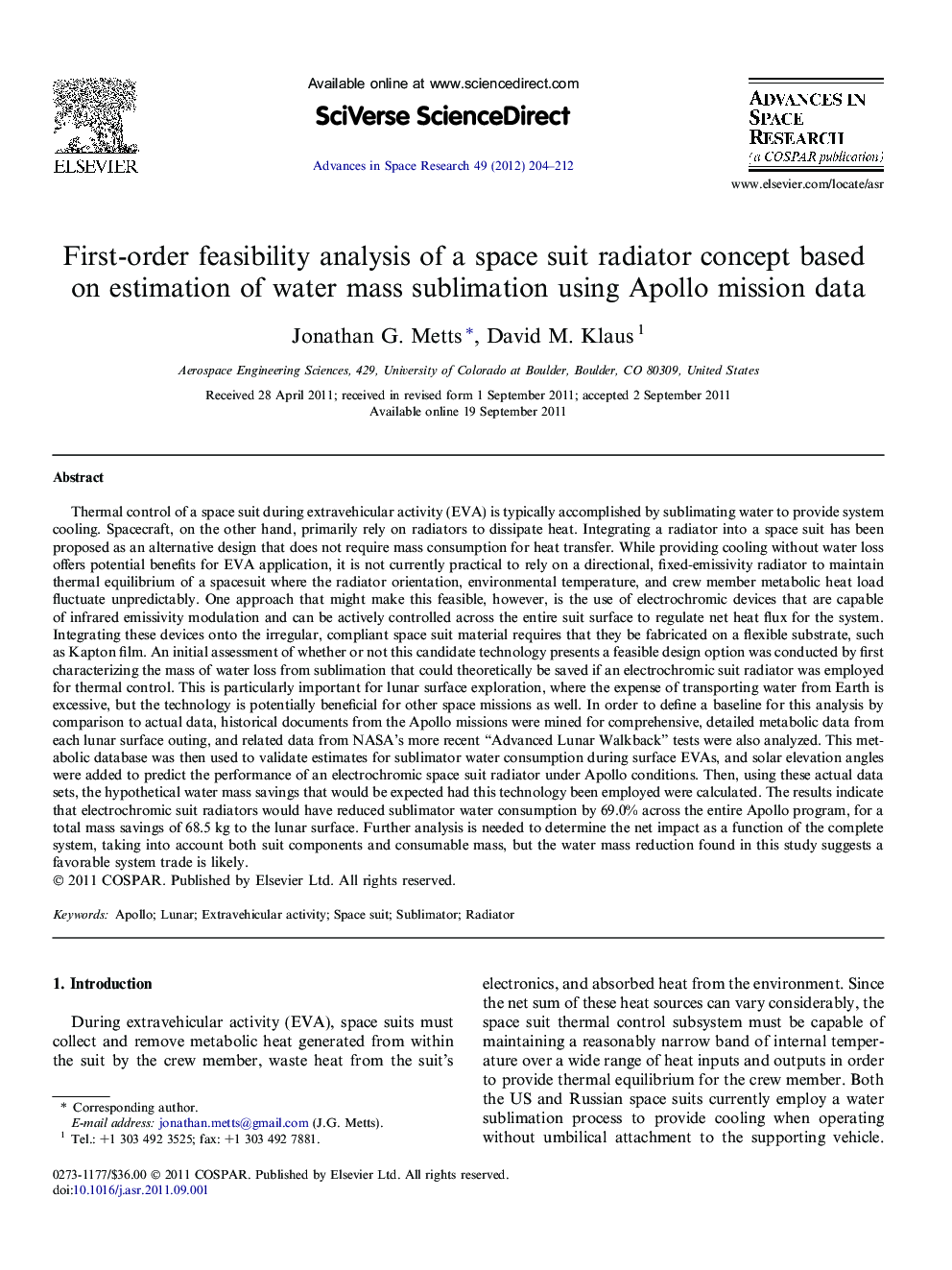| کد مقاله | کد نشریه | سال انتشار | مقاله انگلیسی | نسخه تمام متن |
|---|---|---|---|---|
| 1764777 | 1020071 | 2012 | 9 صفحه PDF | دانلود رایگان |

Thermal control of a space suit during extravehicular activity (EVA) is typically accomplished by sublimating water to provide system cooling. Spacecraft, on the other hand, primarily rely on radiators to dissipate heat. Integrating a radiator into a space suit has been proposed as an alternative design that does not require mass consumption for heat transfer. While providing cooling without water loss offers potential benefits for EVA application, it is not currently practical to rely on a directional, fixed-emissivity radiator to maintain thermal equilibrium of a spacesuit where the radiator orientation, environmental temperature, and crew member metabolic heat load fluctuate unpredictably. One approach that might make this feasible, however, is the use of electrochromic devices that are capable of infrared emissivity modulation and can be actively controlled across the entire suit surface to regulate net heat flux for the system. Integrating these devices onto the irregular, compliant space suit material requires that they be fabricated on a flexible substrate, such as Kapton film. An initial assessment of whether or not this candidate technology presents a feasible design option was conducted by first characterizing the mass of water loss from sublimation that could theoretically be saved if an electrochromic suit radiator was employed for thermal control. This is particularly important for lunar surface exploration, where the expense of transporting water from Earth is excessive, but the technology is potentially beneficial for other space missions as well. In order to define a baseline for this analysis by comparison to actual data, historical documents from the Apollo missions were mined for comprehensive, detailed metabolic data from each lunar surface outing, and related data from NASA’s more recent “Advanced Lunar Walkback” tests were also analyzed. This metabolic database was then used to validate estimates for sublimator water consumption during surface EVAs, and solar elevation angles were added to predict the performance of an electrochromic space suit radiator under Apollo conditions. Then, using these actual data sets, the hypothetical water mass savings that would be expected had this technology been employed were calculated. The results indicate that electrochromic suit radiators would have reduced sublimator water consumption by 69.0% across the entire Apollo program, for a total mass savings of 68.5 kg to the lunar surface. Further analysis is needed to determine the net impact as a function of the complete system, taking into account both suit components and consumable mass, but the water mass reduction found in this study suggests a favorable system trade is likely.
Journal: Advances in Space Research - Volume 49, Issue 1, 1 January 2012, Pages 204–212